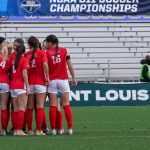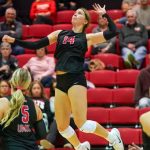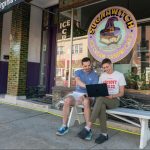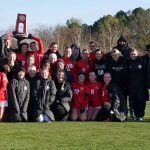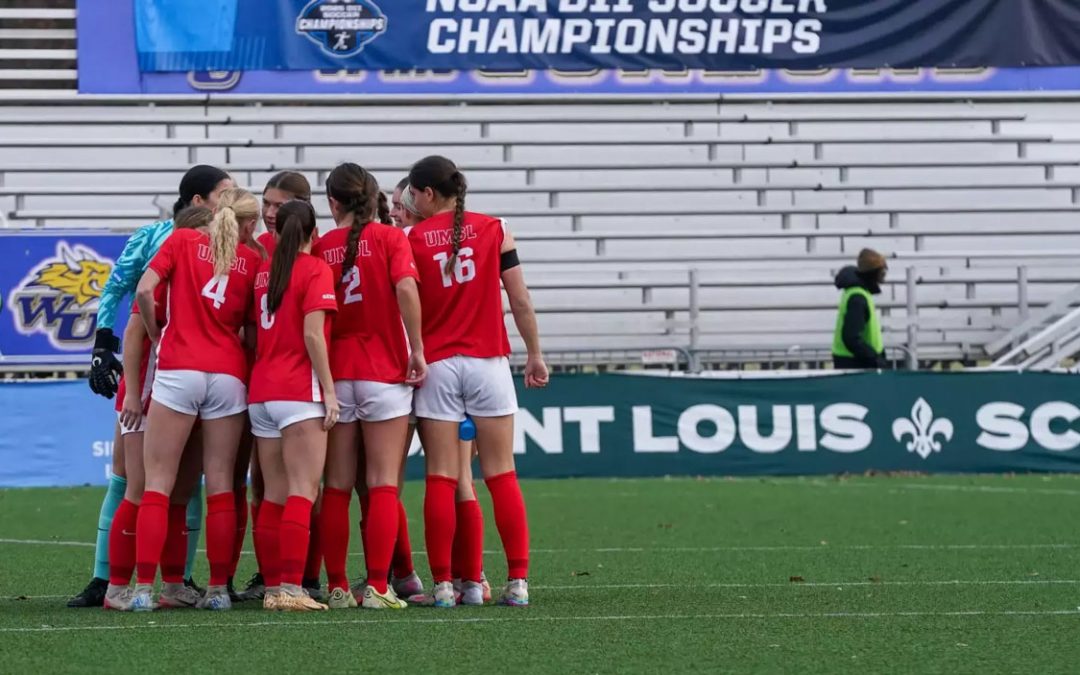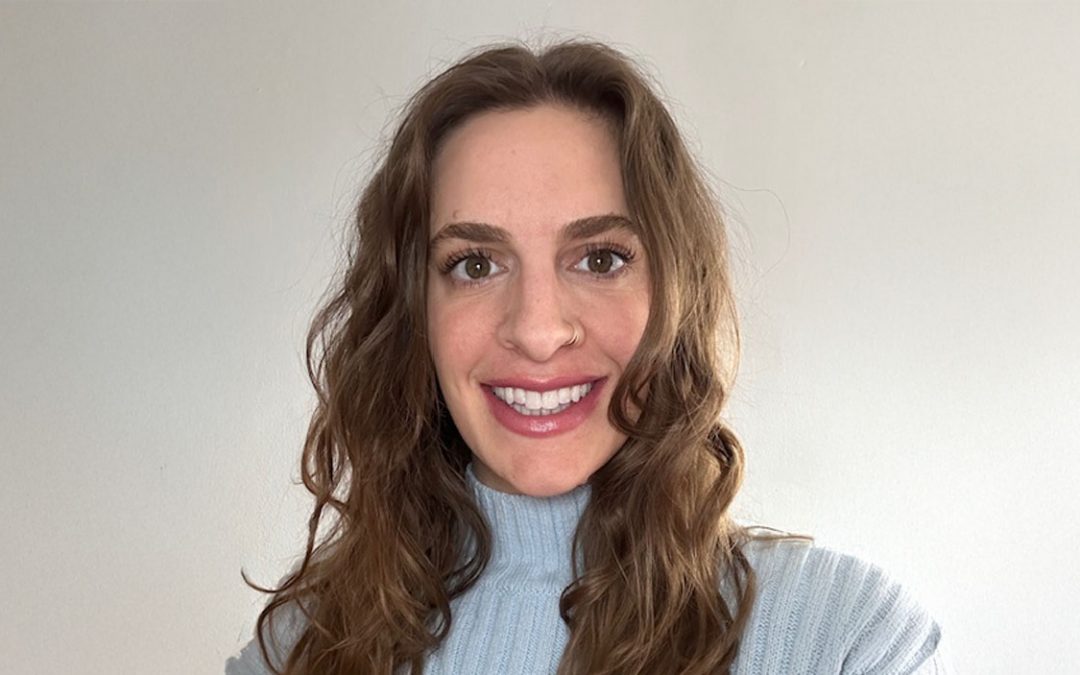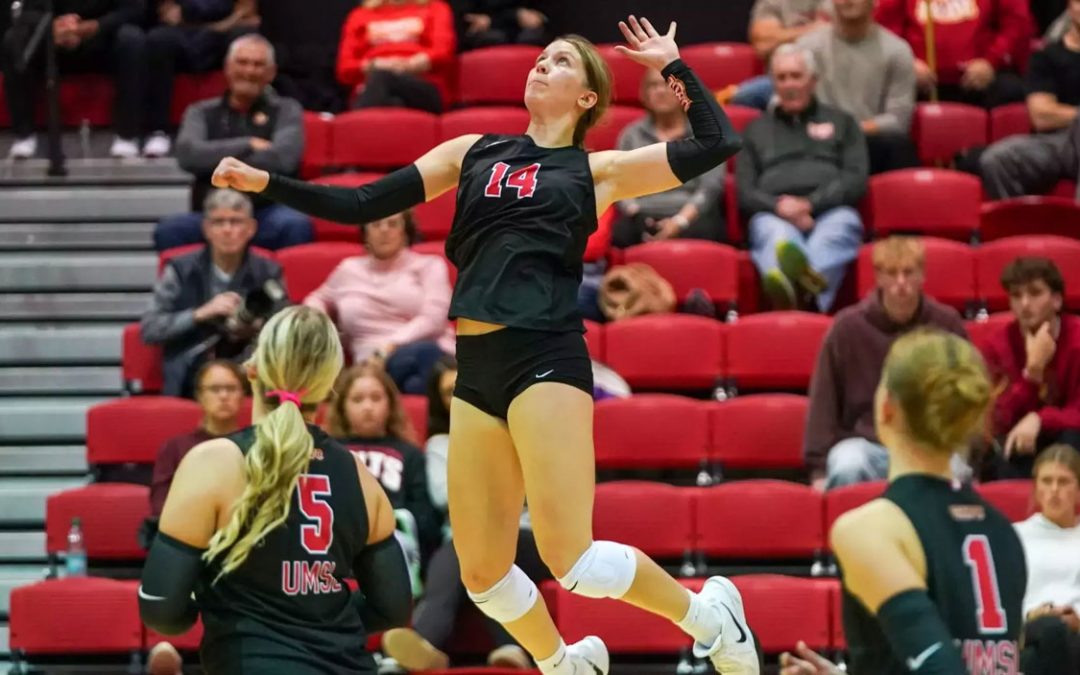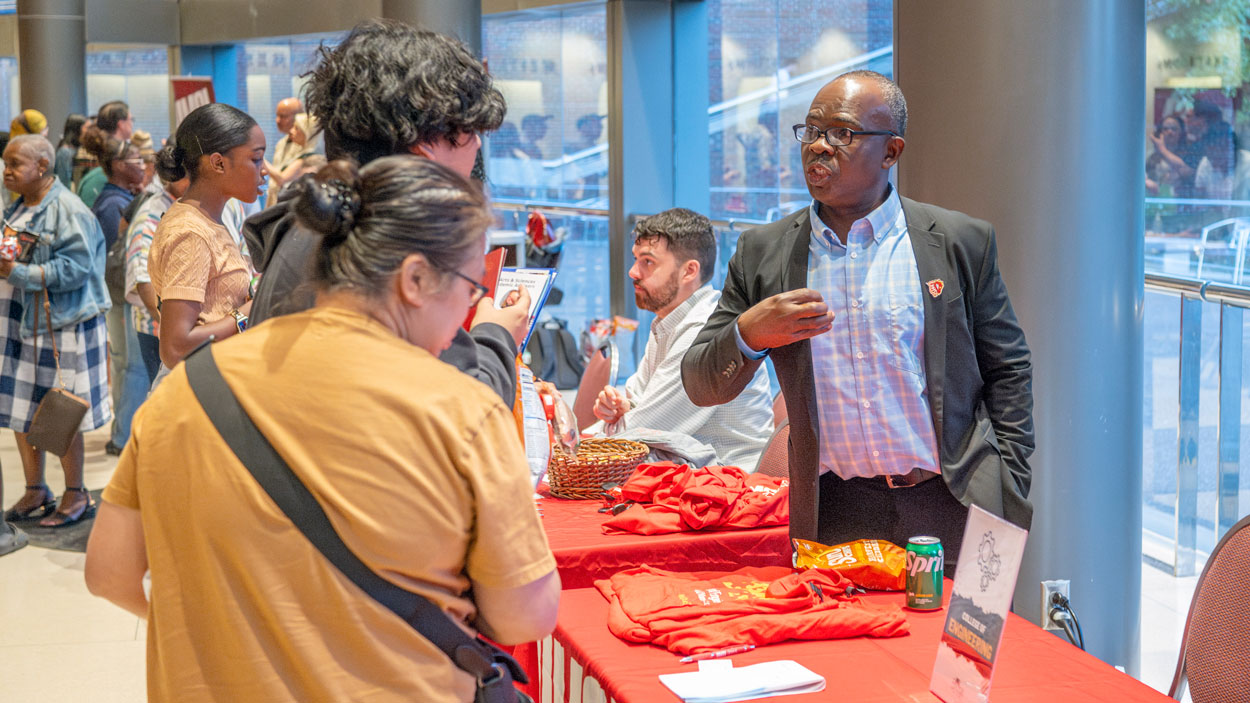
George Nnanna, the founding director of the School of Engineering, has been spreading the excitement for his program since arriving at UMSL. Nnanna spent time at the School of Engineering table, talking with potential engineering students, at the opening night for the UMSL Bridge Program in September. (Photo by Derik Holtmann)
From the moment he interviewed for the role as founding director of the University of Missouri–St. Louis’ new School of Engineering, George Nnanna has had a clear vision of what he wanted students to experience in the program.
The curriculum Nnanna has designed focuses on experiential learning along every step of the way, from orientation to graduation. By giving UMSL engineering students copious opportunities for hands-on experiences, Nnanna is allowing them to build and create as a way of accelerating the knowledge they’re gaining through lectures and textbooks.
That learn-by-doing approach started with robocar kits distributed in the first month of the first engineering class, ENGR 1414 (Elementary Engineering Design), offered in the new school’s first semester. The course is being taught as a collaborative effort by Nnanna and his first two hires, Xin Wang and Hamid Sanei, giving students and faculty members a chance to get to know each other. Nnanna is leading the civil engineering elements, Sanei is teaching the mechanical engineering content and Wang is handling the electrical and computer engineering components.
“Our students have only taken the course for about six weeks, and they have already accomplished building a robocar,” Wang said. “For me, it’s been definitely beyond my expectations. We have very good kids, very smart kids who are very good at hands-on solving problems. I think they are excited. We are not just having them take notes for an exam. We want to build a program that is a lot of fun. They are inventors, they are creators, and they are engineers. They’re building real things while they are gaining the knowledge. That’s the idea.”
And the students – there are more than 60 in the school this semester – will have a chance to put their work to the test. As part of the Explore Engineering Day in the Millennium Student Center Century Rooms on Nov. 8, the students will be racing the robocars they assembled from the wheels to the motor drive, all controlled through an app on their phone.
Nnanna, Wang and Sanei are excited to teach their students to build because as engineers, they are wired to build and create. All three recognized this unique opportunity for building something special both at UMSL and in the St. Louis area in general, and that’s exactly what they’re doing with the School of Engineering.
“When I saw the ad for the director’s position,” Nnanna said, “one of the things I looked at was the region, to raise the question, ‘Do we have the opportunity to recruit the students?’ I looked at the number of school districts, and then I looked at the industries, the nature of work these industries are doing and how relevant it is to engineering. I looked at the opportunities that are available in terms of the support for the school, both internally from the Chancellor and Provost and the business community and to see whether the state itself is behind this initiative. UMSL had all those boxes checked. Yes, there is interest, there is support for this program, and there is potential for it to grow. That convinced me that I’ll be able to make an impact in this region.”
Nnanna has taken on a similar challenge in the past, making him uniquely suited for UMSL’s opportunity; he was founding dean of the College of Engineering at the University of Texas Permian Basin, which he helped open in 2018. His first two UMSL faculty hires share his excitement for being part of building the School of Engineering from the ground up.
Sanei joined UMSL after nearly 10 years at Penn State University, following four years at the University of Wyoming. The coordinator of the mechanical engineering program at UMSL, Sanei wasn’t actively looking to leave Pennsylvania but recognized what UMSL offered.
“If not the sole reason, that was the main reason that I moved here,” Sanei said. “I was a tenured associate professor at Penn State. I was very established. I had my own research group and research labs, and I was very comfortable with colleagues and the city. Everything was good. But when I looked at the opportunity of starting a program, starting the curriculum, starting experiential learning – which is a new technique in teaching – the collaboration with the industry, the project base, these are very exciting notes that got me excited to apply.”
As Sanei looked at the industry opportunities in St. Louis, he wasn’t just looking at the major players such as Boeing, Ameren and Emerson. He was looking at how companies were investing in the region through indicatives such as the Advanced Manufacturing Innovation Center St. Louis.
“I did my homework. I knew the area, knew St. Louis,” Sanei said. “We have AMICSTL, a big center on advanced manufacturing. And my area of research is additive manufacturing, so that was a big deal. Knowing that there is a lot of industry for me as a mechanical engineer, and especially in advanced manufacturing, that I could benefit from and collaborate with, was definitely a winning card that made me convinced this was the right move.”
Collaborating with industry partners was a huge element of his work at Penn State, and he was successful – to the enrichment of his students – because he understands how to approach companies to encourage collaboration in a way that is mutually beneficial.
“It’s important to have an understanding of an industry’s priorities, and the challenges that companies are facing,” Sanei said. “I have developed that experience throughout the years, knowing when and how to approach them. Some don’t really want to commit a lot of time, so if what we’re asking requires one of their engineers being busy for the duration of the semester dealing with the students, that’s probably not something that they would be really interested in.
“What we have figured out is that we can get projects that are on the back burner, something that they’re not actively working on. Maybe they had an idea in the boardroom one day, but they were too busy to tackle it. We’ll say, ‘OK, what if you just give it to us and students will come up with ideas? We’re going to do prototyping, and you could look at it and then just run the idea at an initial stage.’ If we set the expectation right at the beginning and we have an understanding, we can set up a collaboration that would be beneficial for both sides.”
Industry collaboration is something that Wang, the coordinator of the electrical engineering program, emphasizes, too.
“I worked over 12 years on the other side of the river at Southern Illinois University, Edwardsville, and I know the great companies we have here in St. Louis,” Wang said. “I love St. Louis, and I want to contribute to this great city. UMSL is a great school. In our program of electrical engineering, we will heavily focus on practical industrial applications. My background is in power systems, so our program is aiming at developing one of the best power engineering programs in the country. I have a lot of my former students who, once they graduate, work for companies like Ameren and Emerson and others all over the country.”
Wang’s local industry knowledge is helpful, but it wasn’t the only reason Nnanna felt that he was an ideal choice as one of his first faculty hires.
“That played a role in the decision-making, the proximity from SIUE to our school, and also the area of research in power system, that played a role,” Nnanna said. “But more importantly is being a team player. You can have regional experience, but if you’re not a catalyst to drive the vision forward, then that will not be helpful. In interacting with Dr. Wang, it seems to me that he’s one that will help in moving the school agenda forward. That capacity to be a team player overrides knowledge of the region. I want to build a cohesive School of Engineering.”
He has done that, in a short time. Nnanna was hired in January 2025 and officially started on April 1. Since then, he has hired Wang and Sanei – with more faculty members on the way – designed a curriculum, hosted the inaugural UMSL Engineering Camp this summer, made industry connections throughout the region and beyond, helped bring in scholarships for engineering students and checked off so many other boxes on his to-do list. The department has also helped students launch a Robotics Club and a Formula SAE club, which gives students the opportunity to build full-size racing cars from the ground up.
Down the road, Sanei has 3D printing projects prepared for the students, and Wang is already preparing to show his students how to build drones on their own.
“I’m just feeling honored to be part of the team,” Wang said. “We have a great supporting team here at UMSL. The provost is extremely helpful. The chancellor is really helpful. The deans are really helpful. We have a great, wonderful community. The UMSL School of Engineering will make a huge impact, not only on St. Louis and this greater area, but to the entire nation. We have a lot of unique advantages.”


